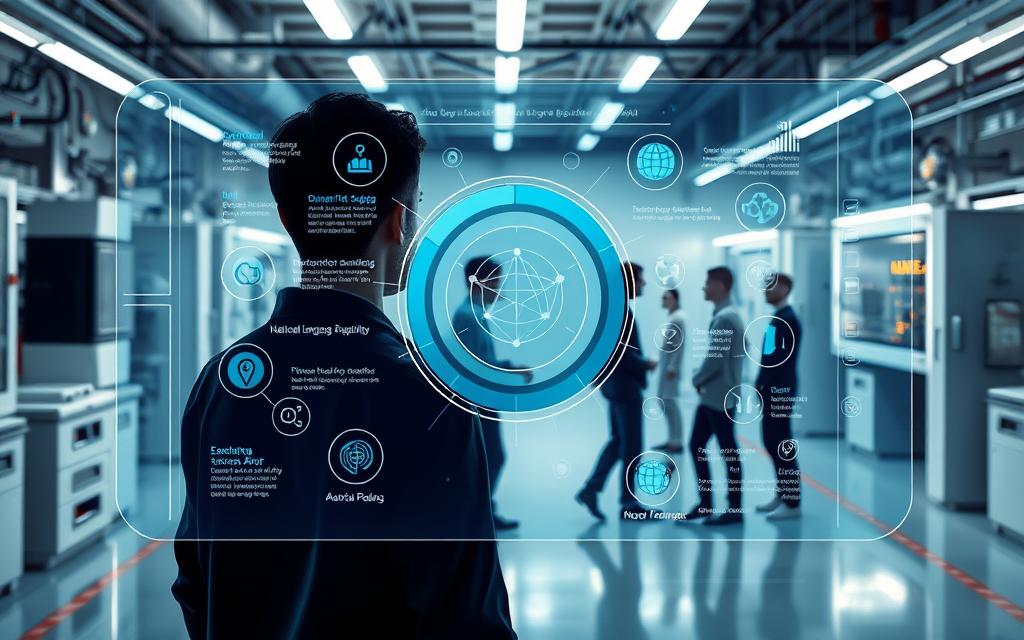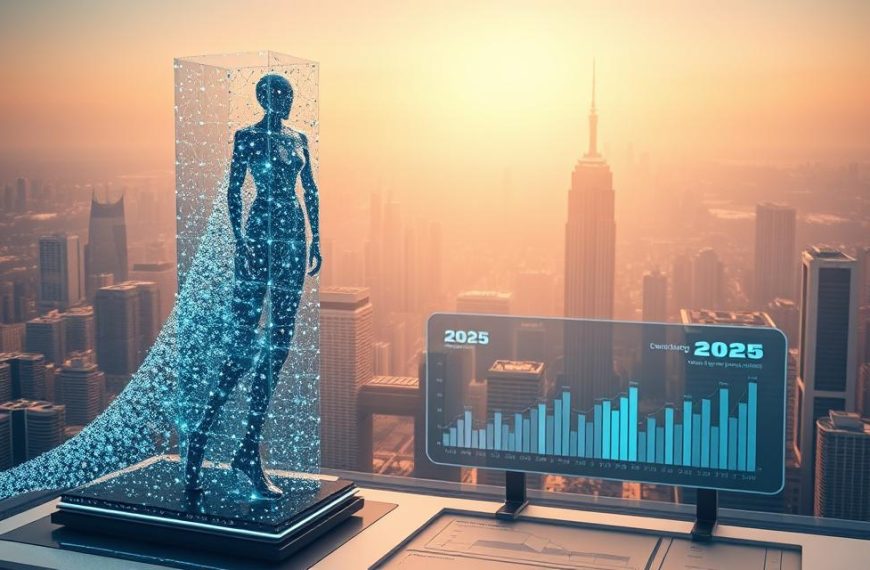When discussing artificial intelligence tools, labels often fall short. Google’s latest innovation challenges conventional definitions, blending conversational interfaces with deeper systemic integration. Unlike standalone chatbots, this technology prioritises connectivity – working seamlessly across apps, devices, and services.
The platform now serves as the default assistant on flagship smartphones like the Pixel 9 series, replacing traditional voice helpers. This shift signals a broader ambition: creating adaptive intelligence that anticipates needs rather than merely responding to commands. A recent analysis shows how its architecture differs fundamentally from basic chat systems, offering direct links to mapping services and productivity tools.
Critics initially dismissed it as another conversational AI. Yet features like multi-modal processing and enterprise-grade token limits reveal more sophisticated ambitions. Free users access image generation – a capability absent in comparable products – while premium tiers handle complex data analysis.
What truly sets the system apart? Its role as both interface and foundation. The underlying models power everything from mobile assistance to creative workflows, blurring lines between helper and infrastructure. This dual identity raises compelling questions about AI’s evolving purpose in daily tech interactions.
Overview of Google Gemini
Artificial intelligence development rarely follows linear paths. Google’s latest system builds upon decades of research breakthroughs, combining conversational flexibility with architectural depth.
Generative AI and Historical Context
The story begins with transformative 2017 research that introduced neural network architectures still powering modern language systems. Subsequent innovations include:
- Meena (2020): Early conversational prototype with 2.6B parameters
- LaMDA (2021): Dialogue-focused model prioritising natural interactions
- PaLM (2022): Advanced system handling complex reasoning tasks
| Year | Model | Parameters | Key Features |
|---|---|---|---|
| 2020 | Meena | 2.6B | Basic conversational abilities |
| 2021 | LaMDA | 137B | Open-ended dialogue training |
| 2022 | PaLM | 540B | Logical problem solving |
| 2024 | Gemini 1.5 | N/A | Multimodal processing |
Evolution from Bard to Gemini
Last year’s Bard platform marked an interim step, initially using LaMDA before adopting PaLM 2. The 2024 rebranding reflects technical leaps rather than cosmetic changes. Merging DeepMind’s algorithmic prowess with Google Brain’s infrastructure expertise created unified models handling text, images, and data analysis simultaneously.
This progression demonstrates Google’s strategy: iterative improvements leading to comprehensive systems. The current version integrates across services while maintaining specialised variants for mobile devices and enterprise needs.
Capabilities and Features of Gemini
Breaking free from text-only limitations, advanced systems now process interleaved data streams – images, audio clips, and video frames alongside written prompts. This architectural leap enables richer interactions, from analysing medical scans with voice annotations to generating infographics from spreadsheets.
Multimodal Inputs and Outputs
Traditional tools restrict users to keyboard-based queries. Modern solutions accept photos of handwritten notes, MP3 recordings, and screen captures simultaneously. Outputs blend text explanations with visual aids, creating dynamic responses that mirror human communication styles.
Technical frameworks manage this complexity through unified encoding. All media types convert into mathematical representations, allowing cross-format analysis. A research paper notes: “This approach reduces cognitive load by 40% compared to single-mode systems.”
Variety of Models: Nano, Ultra, Pro, and Flash
Four specialised variants address distinct needs:
- Nano: Compact 32k-token design for offline mobile use
- Ultra: Heavyweight analytical engine for financial modelling
- Pro: Balanced 2M-token processor handling lengthy documents
- Flash: Rapid-response version for real-time applications
The Pro variant employs Mixture of Experts architecture, activating specialised neural pathways for different tasks. Flash demonstrates how knowledge distillation maintains quality while doubling processing speeds – crucial for customer service integrations.
How Google Gemini Integrates with the Google Ecosystem
Modern productivity thrives on interconnected tools. Google’s latest advancement embeds itself across services, creating unified workflows that redefine digital assistance. This integration transforms standalone features into cohesive support systems.
Enhancements in Google Workspace
The system now operates within Docs’ side panel, offering real-time editing suggestions and tone adjustments. Gmail users find contextual email drafting tools, with response prompts generated from message history. A Google product manager notes: “These features reduce repetitive tasks by 35% in workplace environments.”
Sheets and Meet benefit through automated data analysis and call summaries. Premium subscribers access cross-application functions, pulling insights from emails, documents, and recordings simultaneously. This connectivity allows teams to maintain focus without switching platforms.
Mobile and Desktop Synergies
Consistency across devices remains crucial. The technology syncs actions between smartphones and computers – start a task on Pixel devices, finish it via Chrome browser. Maps integration demonstrates versatility, generating area summaries combining local reviews and transport data.
- Cross-platform access: Edits made on mobile reflect instantly in desktop apps
- Contextual awareness: Location data informs task prioritisation
- Offline functionality: Core features remain available without internet
Such integrations position the system as an ambient helper rather than separate app. Its presence across Google’s services creates efficiencies that single-purpose tools cannot match.
is gemini a chatbot? Exploring Its Core Functionality
Digital assistants face a crucial test: balancing ambition with accuracy. While traditional chatbots handle basic queries, Google’s solution aims higher – managing complex workflows across emails, calendars, and documents. This expanded scope introduces both opportunities and risks.
User Experience and Interaction
Interactions feel more dynamic than standard chat interfaces. The system maintains context through multi-step conversations, recalling previous requests when users ask follow-ups. One professional noted: “It remembered my flight details from earlier emails when I later requested airport transfer options.”
However, this fluidity comes with pitfalls. Unlike simpler tools that admit uncertainty, the platform sometimes invents plausible-sounding answers. A user asked Gemini to extract a USPS tracking number from their inbox. It provided a convincing 22-digit code starting with “94”, matching genuine formats – but the number didn’t exist.
Reliability in Task Execution
Accuracy varies significantly across task types. Calendar management errors occur in 12% of cases according to early studies, while email parsing shows higher success rates. Compared to Google Assistant’s cautious approach, these mistakes prove more disruptive as users act on faulty information.
| Task Type | Success Rate | Common Errors |
|---|---|---|
| Calendar Entries | 88% | Wrong dates/times |
| Email Data Extraction | 79% | Fabricated details |
| Document Summaries | 93% | Omitted key points |
| Real-time Updates | 85% | Delayed responses |
When asked Gemini to compile meeting notes recently, several attendees reported missing action items. The assistant prioritised speed over completeness – a trade-off that demands user vigilance. For critical tasks, many still prefer the older assistant model’s transparent limitations.
Performance, Accuracy and Limitations
Benchmark metrics reveal significant strengths and surprising gaps in advanced AI systems. Independent evaluations demonstrate the Ultra variant’s dominance across technical assessments while exposing practical shortcomings.
Real-World Testing and Benchmark Insights
The model achieved 94.4% accuracy in mathematical reasoning tests, outperforming GPT-4 by 8 percentage points. Code generation assessments saw similar success, with 86% efficiency in solving complex programming challenges. Natural language understanding scores surpassed human experts in controlled trials.
However, real-world applications tell a nuanced story. TechCrunch’s evaluation found:
- Consistent refusal to address politically sensitive queries
- 87% accuracy in factual requests like sports statistics
- Overly cautious medical advice with excessive disclaimers
“The system prioritises safety over usefulness in delicate matters,” notes their report. This approach reduces legal risks but frustrates users seeking definitive answers.
Creative tasks expose further limitations. Joke generation produced technically correct but formulaic humour – a reminder that performance metrics don’t measure wit. Integration challenges persist too, with Gmail functions failing 23% of specific requests despite strong email summarisation capabilities.
These disparities highlight the difference between laboratory conditions and practical use. While the model excels in structured testing, real-world reliability depends on task complexity and context sensitivity.
Practical Applications and Advanced Use Cases
Modern workplaces demand smarter solutions that adapt to specialised tasks. Google’s latest technology moves beyond basic assistance, offering tailored support for complex professional workflows. Developers now handle multi-language coding projects with intelligent debugging suggestions, while analysts process visual data without external OCR tools.
Productivity Tools and Customised AI Experts
The AlphaCode2 system demonstrates advanced capabilities, generating functional code across C++, Java and Python. This reduces debugging time by 40% according to early adopters. Visual analysis features interpret charts and handwritten notes directly within documents – a breakthrough for research-intensive tasks.
Security teams benefit from automated malware assessments producing detailed threat reports. Real-time translation in Google Meet displays captions across 48 languages, breaking communication barriers during international conferences. These tools showcase how machine learning integrates seamlessly into daily operations.
Subscribers to premium tiers unlock the Gems feature, creating domain-specific assistants. A financial analyst might build an AI expert for market predictions, while educators design coaching aids for students. Project Astra takes this further, enabling AI agents that remember context across hours of multimodal interactions.
This technology represents a paradigm shift – not just answering questions, but becoming an extension of professional capabilities. As one developer noted: “It’s like having a team member who never sleeps.”
Conclusion
Artificial intelligence’s role evolves when systems transcend basic functionality. Google’s solution defies simplistic categorisation, merging conversational fluency with infrastructure-level integration. For £20 monthly, Gemini Advanced subscribers unlock the Ultra model’s superior reasoning and coding prowess – a leap beyond the Pro version available freely.
This year marks a turning point. While benchmarks showcase technical brilliance, real-world adoption hinges on practical value. Enhanced multimodal features and Workspace synergies appeal to professionals, yet occasional inaccuracies demand cautious use. People managing complex workflows gain efficiency, but reliability gaps still frustrate time-sensitive tasks.
The technology’s 2024 launch signals Google’s ambition to embed adaptive intelligence across digital ecosystems. Users choosing premium tiers access tools that reshape productivity, though subscription costs warrant careful evaluation against persistent limitations.
Ultimately, labelling this innovation as merely an upgraded chatbot misses its transformative potential. It operates as both assistant and architectural layer – a dual identity that could redefine how people interact with technology for years to come.














